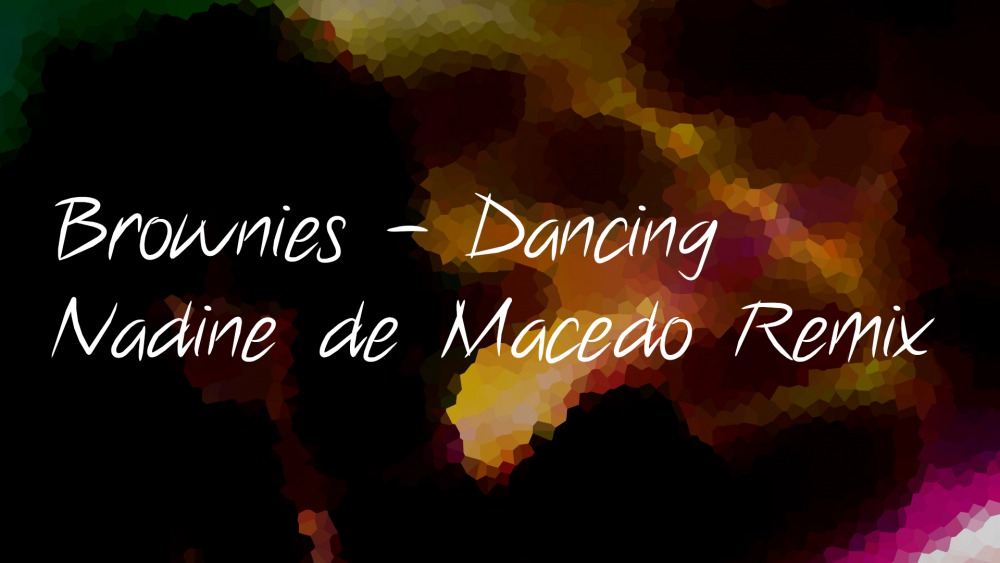
A remix in 36 hours
The Israeli band Brownies handed in their song “Dancing” for the start-ab remix contest 2010. The special thing about this remix contest: You only have 36 hours to remix and produce a song in radio length. Read the story about one of the shortest remix contests of the world and how I approached that challenge.
Analysing the material
As the start-ab remix contest has been related to the cultural event Ruhr 2010, our local radio station searched for interview partners and contacted me. Before the official start of the contest, nobody knew about the song, style or artist. Right after the start signal, we took a listen into the given material, often called “stems”. These are individual files of the instruments or full song parts the producer can arrange according to taste. How do you remix a song? Don’t jump into production before you haven’t analysed the following:
- Which key is the original song?
- Which chords and inversions are used?
- What is the BPM of the original song?
- Are keys and BPM changing throughout time?
There are some algorithms which may help you to get that information, but the situation has been different in 2010. I only had my pair of ears, a scale chart and a metronome to recreate the original chord sheet of that song. If you want to try it yourself, listen to the original song on the band’s official YouTube profile and comment your results.
Starting with a zero crossing, I put all tracks into my arrangement and clicked the beat until the metronome synchronized exactly. I started to play along the vocals to figure out the melody, song structure and key.
Finding the right harmonies
A good remix is close to the original, but still a new piece of music. Some remixes like to play along piano or guitar tracks, but I did not listen to them. Instead, I chose the bassline and the vocals to create a harmonic structure. The reason for it is quite simple:
Guitars have a wide frequency spectrum and play full chords with (nearly) all strings. If I take my harmonies from this track, I have to use the full chords or a harmonic subset of these. If the guitarist plays Em7, I have to play either Em7, Em, E5 or G. The less information I have about the chords, the bigger is my artistic freedom. Let’s say the singer sings a G and the bassist plays an E. I can take all chords with G and E inside, like C major. I only have to ensure, that the scale of my chord works with the scale of the vocals.
Most of the time, a remix is written in the same key and scale like the original, but sometimes it is not. Let me show you my single “Lost Letter” which has been written in F lydian. The Thomas You remix is in C major and uses the same vocal stems. This works, because F lydian and C major use the same tones. If you want to know more about the theory, I recommend reading my post on modal songwriting.
Arranging the remix
After three hours of work, I had the full chord progression and tried out some ideas on arpeggios. The more I composed and produce, the less I liked my approach on arpeggio. So, I wrote down the chord progression and rested. The next morning, I figured out that the remix works better without full chords, so I deleted lots of thirds and fifths out of my chords and worked on another rhythm.
Until then, my remix only consisted of a verse and chorus, so the arrangement was the next thing to do. I filled the synthesizers and chords according to the vocals, tried out some beats and had another look into the stems. The lead guitars worked fine on the climax. I also used some guitar fills and licks. The next couple of hours flew by with creating a trance beat and searching for drum samples.
Mixing and Mastering
24 hours of 36 hours remix contest flew by, and my remix is nearly finished. Since I already mixed parts of the song during arrangement, I only had to kill some annoying and overlapping middle frequencies. Guitars, vocals and synthesizers share the same frequency space, so I had to use a lot of EQs and compressor to make the sound clean and punchy. Next, I tried out some settings for reverb. I did not think too much here, because I produced a lot of songs in this period.
Just before handing in the remix, I had to do some mastering. I applied a compressor and limiter on the sum to make this song a bit louder. It is not easy to find the right dynamics, because the verses should sound natural and danceable at the same time. My mastering has been very basic and lousy, since I need much more time and a pair of fresh ears to do it properly.
Finished!
36 hours is a short period of time for a remix and production, but I managed to hand in my remix 6 hours before deadline. You can listen to the result at YouTube.

About two thirds of the participants managed to hand in their remixes in 36 hours. Most people were close to deadline. My remix has received good critiques from the contestants and the jury. I did not win, but I was in the upper third.
How does it feel to finish a remix in 36 hours?
Remixing in this short amount of time is challenging and stressful. But I have good vibes, because I talked to lots of interesting musicians and producers. Before entering that challenge, I did not expect to succeed at all. You can skip a lot of steps, the more proficient you are. I still think that you should invest more time into mixing and mastering, because your ears have to be well-rested to do it well. I also noticed, that an arrangement done in two months is not better than one written in two days. This remix contest helped me to stay focussed and to rethink my structures.
I’d like to thank and greet the band Brownies, the team of start-ab and the people from our local radio station Antenne Düsseldorf. It’s been fun to remix this song and to participate in this challenge. I have learned a lot about arrangement, remixing and time management. Thanks also for letting me upload this song onto YouTube and using cover and lyrics for promotional purposes.




